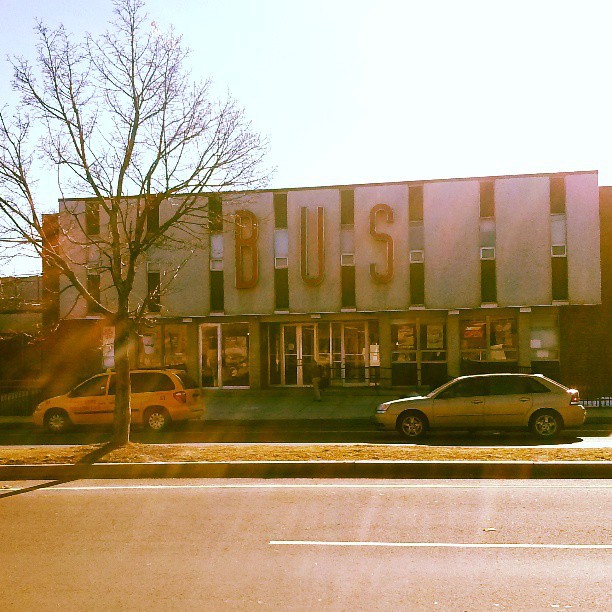Life in the Desert: The Troubling Need for Cars
by Joshua Michtom

We’ve read lately that Americans are driving less than ever. Apparently, this cannot be explained simply by economics, but still: driving is expensive! AAA exhaustively details the costs of driving in this pdf. TL;DR: when you take into account gas, maintenance, financing, insurance, and registration, even a small sedan driven 20,000 miles a year (it gets cheaper the more you drive) costs $0.398/mile to operate. Does that seem maybe like not so much? Consider this: my old commute from Sunset Park, Brooklyn, to midtown Manhattan would have cost $6.76 (plus unimaginable aggravation, plus parking).
Of course, no one in their right mind would commute daily by car from Brooklyn to Manhattan — they would take the subway, which is cheaper, faster, and more relaxing. (When that was my commute, I mostly rode my bike, which had the added benefit of obliging me to ride 17 miles a day, making me appreciably more svelte than I am now.) The problem is that the world is not New York, and out here in the vast American hinterlands, even in cities with serviceable public transportation, cars really are hard to do without.
For example, I live and work in Hartford, Connecticut, which is a little city with a modest but functional public transportation system. Almost all the time, I could make do without a car: I take my kids to school on the city bus and ride my bike to work from there. Most of my recreation happens within walking or biking distance. Even tomorrow, when I have an appointment 60 miles away in Bridgeport, I can take the train and it will be nearly $20 cheaper than driving, if AAA is to be believed. I own a cargo bicycle, which was expensive, but not nearly as expensive as a very cheap used car, and that allows me to do grocery shopping without a car, to carry my children places without a car, and to transport my enormous horn to band practice without a car.
But! Hartford is what is known as a “food desert”: We have one full-service supermarket for our 125,000 people. This doesn’t affect me too much because of the cargo bike and the good fortune of living relatively near to that one supermarket. But most people in town (1) don’t own a cargo bike and (2) don’t live within walking distance of the supermarket. Add to that the fact that Hartford is also an affordable shoes desert, a children’s clothing desert, an electronics desert, and so on, and you see the trouble. For example, I am going camping on Friday with my girlfriend, my two kids, and another couple and their child, so I need a big tent. But Hartford is also a camping supplies desert. Our nearest best bet for such a tent at a reasonable price is Target, which requires a ten-mile bike ride (twenty round trip) along busy, four-lane roads or an hour-long bus ride followed by a mile walk along a road with no sidewalk. And on the way back, of course, we’d be schlepping an eight-person tent. Or, we could do what we’re actually going to do, which is get in our car and drive there.
The problem is that once you have to own a car, the economic incentives get all screwed up. Although a lot of the per-mile cost of driving comes from per-mile supplies like fuel and maintenance, a good chunk also comes from fixed costs: registration, insurance, and the price of the car itself. Once you’ve spent that money, public transit isn’t such a good deal. And when public transit isn’t saving you anything, you figure you might as well enjoy the convenience of door-to-door service on your own schedule and Terri Gross with the bass turned up. Plus, when I carry my children on my cargo bicycle, suburban busybodies actually take time to scold me for exposing them to risk. It’s a lucky thing I’m stubborn, thick-skinned, and have a well-developed sense of class antagonism.
Support The Billfold
The Billfold continues to exist thanks to support from our readers. Help us continue to do our work by making a monthly pledge on Patreon or a one-time-only contribution through PayPal.
Comments